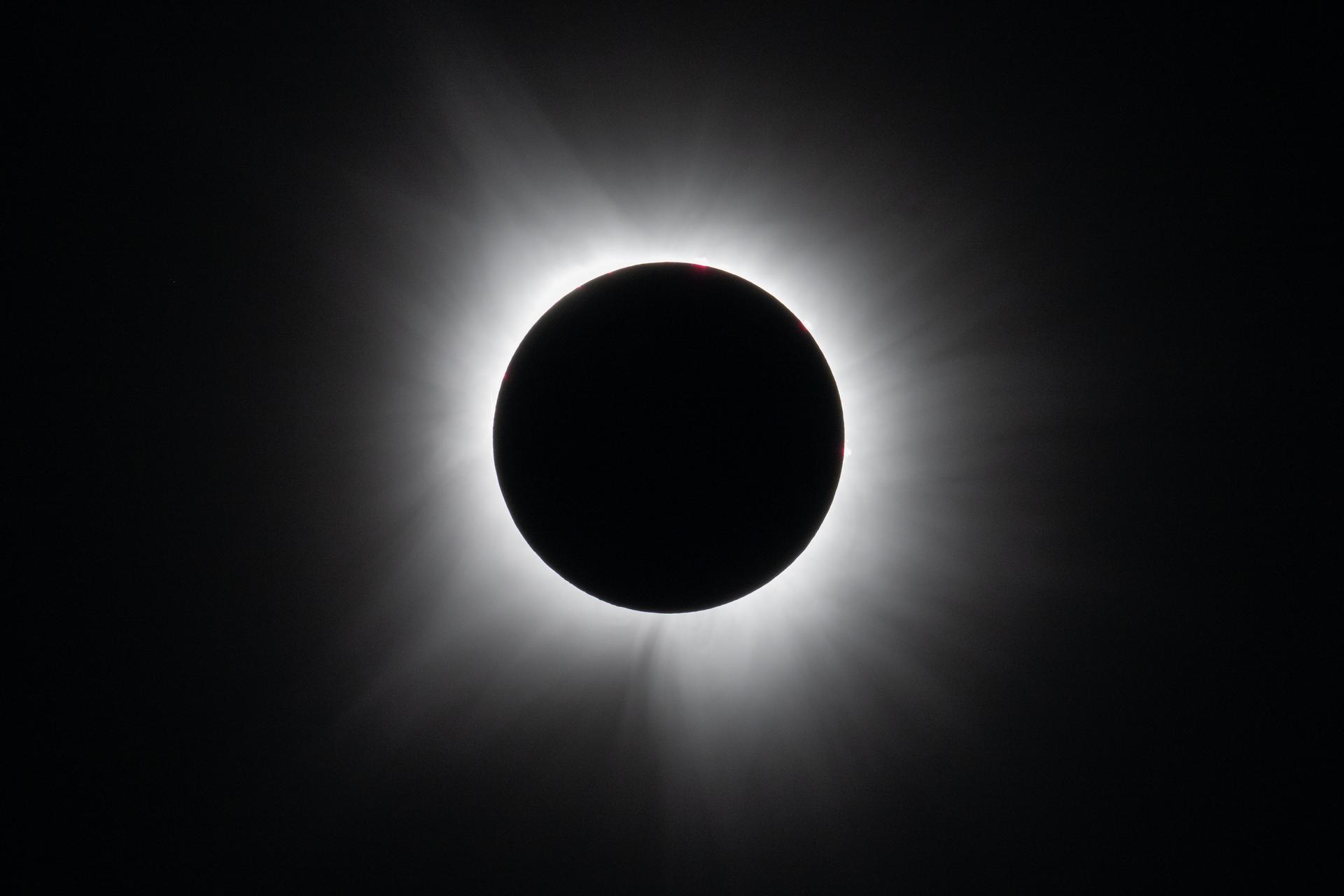4 min read
On August 21, 2017, the shadow of the Moon will sweep across the U.S. landscape, transforming day to twilight. In the surreal gloaming of an eclipse, the temperature drops, birds go silent, crickets begin to chirp, and blossoms start to close. As this scene plays out across a 70-mile wide path of totality from coast to coast, a continent-spanning wave of instruments -- ranging from home-made pinhole cameras and certified eclipse safety glasses to the most sophisticated telescopes in operation today – will be trained on the Eclipse Across America.
Just before totality, a point of glistening sunlight is visible making the moon look like a diamond ring. Then as that drop of sunlight shines through rugged valleys on the Moon’s limb, tiny points of light called "Baily's Beads" appear like a string of beads around the vanishing edge of the sun. But best of all are the pearly white streamers that emanate all around the dark disk at totality.
Scientists eagerly anticipate this eclipse for the unique science opportunities it provides.
Alex Young, NASA’s Associate Director for Heliophysics at the Goddard Space Flight Center in Greenbelt, Maryland, says, “This will be the first total eclipse to span the U.S. since 1918, and scientific instruments have come a long way.”
The event presents a perfect opportunity to shed light on phenomena such as solar flares and coronal mass ejections, or CMEs -- billion-ton clouds of magnetized plasma ejected from the sun. To learn about their dynamics, researchers must study a region of the sun that reveals itself during an eclipse—the corona.
“Solar telescopes can create artificial eclipses using disks called coronagraphs,” explains Young. “Unfortunately, man-made coronagraphs also block the sun’s inner corona where CME eruptions originate.”
Fortunately, during a total eclipse of the sun, the Moon makes a better coronagraph. At totality, the sun’s inner corona appears in clear detail.
Totality lasts mere minutes at any one location, but the Citizen Citizen CATE Experiment will be positioning 68 identical telescopes across the country in the path of totality. The combined network will capture 93 minutes of images and will show changes in the solar atmosphere.
Matt Penn, Astronomer at the National Solar Observatory in Tucson, Arizona says, “The telescopes will be operated by a variety of volunteers, ranging from middle school students to retired scientists, and everyone in between.”
Meanwhile, NASA planes will photograph the Sun, and a cadre of balloons will be floating near the edge of space to observe the eclipse. You can watch too – live from the balloons on August 21 at eclipse.stream.live.
“The terrain and weather are quite varied across the U.S., and the Moon’s shadow will briefly change the climate in each locale, sometimes with drastic drops in temperature within seconds to minutes.”
Young reminds everyone to be safe. Solar filters such as eclipse glasses are necessary to look at the sun directly. If you’re in the narrow path of totality, you can safely remove your solar filter when the moon completely covers the sun. However when the Moon moves off the center of the solar disk—even a little—the sun’s blinding surface reappears and you should once again use your solar filter. NASA has a whole web page devoted to safety tips: eclipse2017.nasa.gov/safety
Many people don’t know that the Moon’s orbit is slowly spiraling outward due to tidal forces. In about 600 million years the Moon will appear too small in the sky to fully cover the sun. Every solar eclipse is counting down to the last one.
Young says, “We live in a fortunate time.”
For NASA’s live coverage of the eclipse go to www.nasa.gov/eclipselive
For total coverage of NASA science, visit science.nasa.gov







